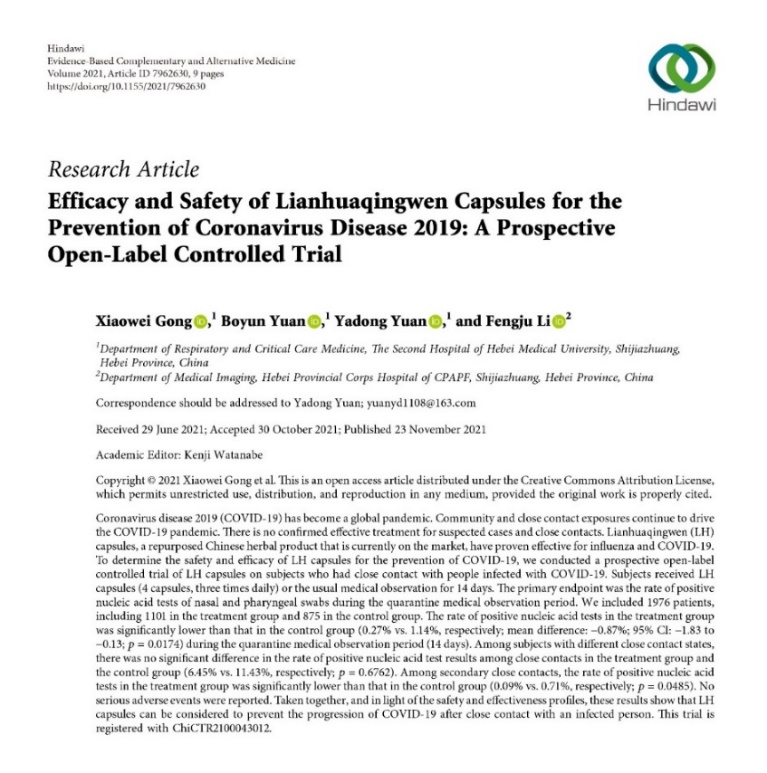1902年诺贝尔医学奖――罗纳德・罗斯――发现蚊子传播疟疾的途径
- 2022-08-01 08:00:05 腾讯健康
- 健康
1902年第二届诺贝尔生理学或医学奖授予了英国医生罗纳德 罗斯,表彰其发现蚊子传播疟疾的途径。
罗纳德・罗斯出生在印度的阿尔莫拉,为英属印度陆军将军坎贝尔・罗斯爵士的十个孩子中的老大。八岁时,他被送回英国,与他的姑姑和叔叔一起住在怀特岛,后续在英国完成学业。罗纳德・罗斯对艺术充满兴趣,但父亲仍然让罗斯选择了医学。由于对医学缺乏兴趣,导致其在医学生阶段并不出色。
毕业后,罗斯于 1881 年 9 月 22 日乘坐军舰前往印度工作。1883 年,他被派往班加罗尔担任驻军代理外科医生,在此期间,他注意到通过限制蚊子取水来控制蚊子数量的可能性。
1894 年 3 月,与家人一起回伦敦休假,结识了帕特里克・曼森爵士。曼森向他介绍了疟疾研究中的真正问题,并坚信印度是最适合研究疟疾的地方。
罗斯于 1895 年 3 月 20 日返回印度,正式开始了他对疟疾的研究。在他的行李在海关清关之前,他就直奔孟买民用医院,寻找疟疾患者并开始制作血片。
1895 年 5 月,罗斯观察到蚊子胃内疟原虫的早期阶段,这是发现蚊子传播疟疾的重要一步。然而,随后他被派往班加罗尔调查霍乱,他的研究热情与计划也被打断。
1897 年 7 月,罗斯设法从收集的幼虫中培养出 20 只成年“棕色”蚊子,并且让这些蚊子成功的吸取疟疾患者的血液,随后他解剖了蚊子。
1897 年8 月 20 日,他证实了蚊子肠道内存在疟原虫,他最初将其鉴定为“斑翅”(后来证明是按蚊属的一种)。 8 月 21 日,他证实了疟原虫在蚊子体内的生长。这一发现于 1897 年 8 月 27 日在印度医学公报上发表, 12 月在英国医学杂志上发表。
1897 年 9 月,罗斯被转移到一个没有疟疾的地方工作,因此他的研究也中断了。
1898年2月17日,罗斯抵达加尔各答,在总统府总医院工作。罗斯立即开展了疟疾和内脏利什曼病(也称为黑热病)的研究。但后续的研究并没有成功,因为患者总是立即得到药物治疗。后来曼森说服他使用鸟类作为研究模型。
最后确定受感染的麻雀为适合的研究模型,到 1898 年 7 月,罗斯确定了库蚊作为禽疟疾中间宿主的重要性。7月4日,他发现唾液腺是蚊子体内疟原虫的储存场所。 7 月 8 日,他确信寄生虫是在咬人时从唾液腺中释放出来的。他后来证明了疟原虫整个传播过程,蚊子将疟原虫从感染的麻雀传播给健康的麻雀。
罗纳德・罗斯因发现鸟类疟原虫的生命周期而获得诺贝尔奖,他没有在人类中建立他的疟疾传播概念,而是在鸟类中。罗斯是第一个证明疟疾寄生虫是通过受感染的蚊子叮咬传播的,在他的案例中是禽疟原虫。1897 年,意大利医生和动物学家乔瓦尼・格拉西和他的同事们确定了疟原虫在按蚊体内的发育阶段;第二年描述了恶性疟原虫、间日疟原虫和疟疾疟原虫的完整生命周期。
当考虑 1902 年诺贝尔生理学或医学奖时,诺贝尔委员会最初打算由罗斯和格拉西分享该奖项,但罗斯指责格拉西故意欺诈,最终有罗斯独享这一奖项。
现在我们都已经了解疟疾的传播路径,疟疾是由疟原虫组的单细胞微生物引起的。它通过受感染的按蚊叮咬传播,蚊子将唾液中的寄生虫引入人的血液中,从而导致人类的感染。疟原虫随着血液循环到达肝脏并在那里成熟和繁殖。
体育bd通常在被受感染的蚊子叮咬后十到十五天开始出现。 疟疾引起的体育bd通常有发烧、疲倦、呕吐和头痛。严重的情况下,它会导致黄疸、癫痫、昏迷,甚至死亡。如果治疗不当,人们可能会在数月后复发。在那些最近从感染中幸存下来的人,再感染引起的体育bd较轻。如果该患者没有持续接触疟疾,这种部分抵抗力会在数月至数年内消失。
English version:
The second Nobel Prize in Physiology or Medicine in 1902 was awarded to the British physician Ronald Ross for his discovery of the way mosquitoes transmit malaria.
Ronald Ross was born in Almora, India, the eldest of ten children of British Indian Army General Sir Campbell Ross. At the age of eight, he was sent back to England to live with his aunt and uncle on the Isle of Wight, where he completed his studies. Ronald Ross was interested in art, but his father still let Ross choose medicine. Due to lack of interest in medicine, it is not very good at the medical student stage.
After graduation, Ross went to work in India on a warship on September 22, 1881. In 1883, he was sent to Bengaluru as an acting garrison surgeon, during which time he noticed the possibility of controlling mosquito populations by restricting their access to water.
In March 1894, he returned to London with his family on vacation and met Sir Patrick Manson. Manson introduced him to the real problems in malaria research and was convinced that India was the best place to study malaria.
Ross returned to India on March 20, 1895, to formally begin his research on malaria. Before his luggage cleared customs, he headed straight to the Mumbai Civil Hospital to look for malaria patients and start making blood films.
In May 1895, Ross observed the early stages of Plasmodium in the stomach of mosquitoes, an important step in the discovery that mosquitoes transmit malaria. However, his enthusiasm and plans were interrupted when he was dispatched to Bangalore to investigate cholera.
In July 1897, Ross managed to grow 20 adult "brown" mosquitoes from the larvae he collected, and had them successfully suck the blood of malaria patients, before dissecting the mosquitoes.
On August 20, 1897, he confirmed the presence of Plasmodium in the mosquito gut, which he initially identified as "Spotted Wing" (which later turned out to be a species of Anopheles). On August 21, he confirmed the growth of Plasmodium in mosquitoes. The discovery was published in the Indian Medical Bulletin on August 27, 1897, and in the British Medical Journal in December.
In September 1897, Ross was transferred to work in a malaria-free location, so his research was discontinued.
On February 17, 1898, Ross arrived in Calcutta to work at the Presidential General Hospital. Ross immediately began research on malaria and visceral leishmaniasis, also known as kala-azar. But follow-up studies were unsuccessful because patients were always given the drug right away. Manson later persuaded him to use birds as research models.
Finally identifying the infected sparrow as a suitable model for the study, by July 1898 Ross had identified the importance of the Culex mosquito as an intermediate host for avian malaria. On July 4, he discovered that the salivary glands serve as storage sites for the malaria parasite in mosquitoes. On July 8, he was convinced that the parasite was released from the salivary glands when it bit people. He later demonstrated the entire process of Plasmodium transmission, in which mosquitoes transmit the parasite from infected sparrows to healthy sparrows.
Ronald Ross, who won the Nobel Prize for his discovery of the life cycle of the avian malaria parasite, established his concept of malaria transmission not in humans, but in birds. Ross was the first to show that the malaria parasite was transmitted by the bite of an infected mosquito, in his case Plasmodium fowl. In 1897, Italian physician and zoologist Giovanni Grassi and his colleagues determined the developmental stages of Plasmodium in the Anopheles mosquito; full life cycle.
When considering the 1902 Nobel Prize in Physiology or Medicine, the Nobel committee originally intended that the prize be shared by Ross and Grassi, but Ross accused Grassi of deliberate fraud, and Ross ended up with the prize alone.
Now we all understand the transmission route of malaria, which is caused by the single-celled microorganisms of the Plasmodium group. It is transmitted through the bite of an infected Anopheles mosquito, which introduces the parasite in its saliva into a person's bloodstream, causing infection in humans. Plasmodium circulates through the bloodstream to the liver where it matures and reproduces.
Symptoms usually begin ten to fifteen days after being bitten by an infected mosquito. Symptoms of malaria usually include fever, tiredness, vomiting and headache. In severe cases, it can cause jaundice, seizures, coma, and even death. If not treated properly, people can relapse months later. In those who had recently survived infection, reinfection caused milder symptoms. If the patient does not have ongoing exposure to malaria, this partial resistance disappears within months to years.
本文地址://www.styjt.com/jiankang/2022-08-01/601567.html
友情提示:文章内容为作者个人观点,不代表本站立场且不构成任何建议,本站拥有对此声明的最终解释权。如果读者发现稿件侵权、失实、错误等问题,可联系我们处理
- 十几名儿童玩水后感染腺病毒,还能去游泳吗?2022-08-01 08:00:06
- 午睡过长会导致老年痴呆,其实有些睡眠问题还可能导致糖尿病、高血压2022-08-01 08:00:06
- 吃荤?吃素?荤素搭配?“吃货”怎么吃合理?2022-08-01 08:00:06
- 关于“肩周炎”的知与不知2022-08-01 08:00:05
- 三餐怎么吃才最合理?很多家长都弄错了,小心孩子越补越差2022-08-01 08:00:05

 国际学术期刊发文证实: 预防服用连花清瘟可降低新冠阳性率和发热率
国际学术期刊发文证实: 预防服用连花清瘟可降低新冠阳性率和发热率2022-03-08

 科兴集团国企还是私企?董事长是陶晓明吗
科兴集团国企还是私企?董事长是陶晓明吗2022-04-26
- 什么是阴痛?
2021-10-26 10:33:42
- 12345连续三次不处理怎么办,1天打3次12345有什么后果?
2022-05-20 09:55:29
- 美立方国内外专家齐聚 颌面专家团再升级
2021-08-23 11:47:40
- 《热点聚焦》医疗机构内新冠病毒感染防控有了新要求
2021-09-15 20:00:10
- 小剂量,大能量!久哥他达非拉片5mg-OAD规律/灵活抗ED!
2022-07-20 16:41:21




